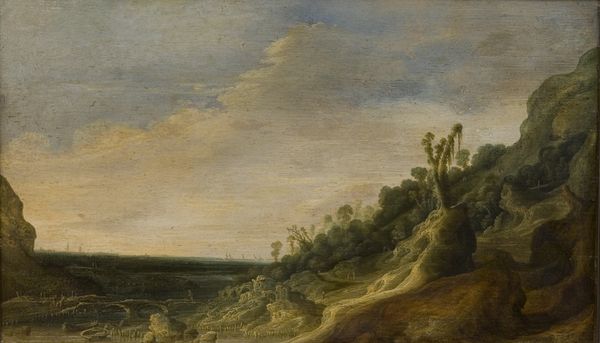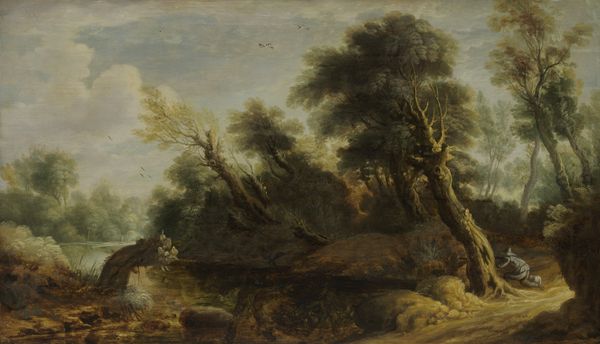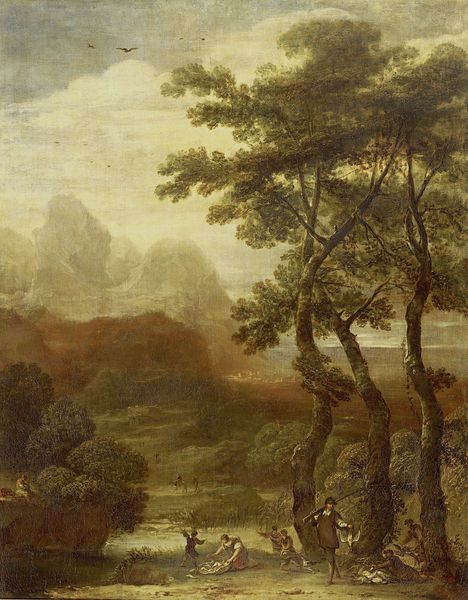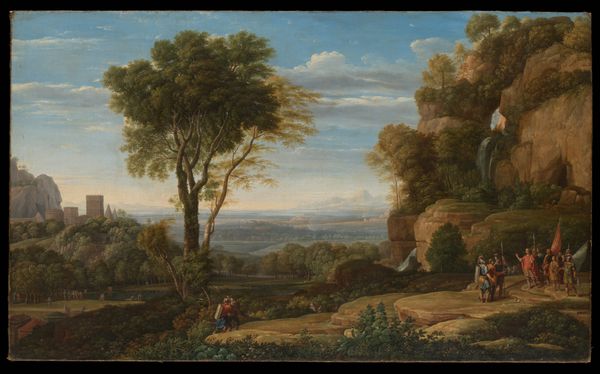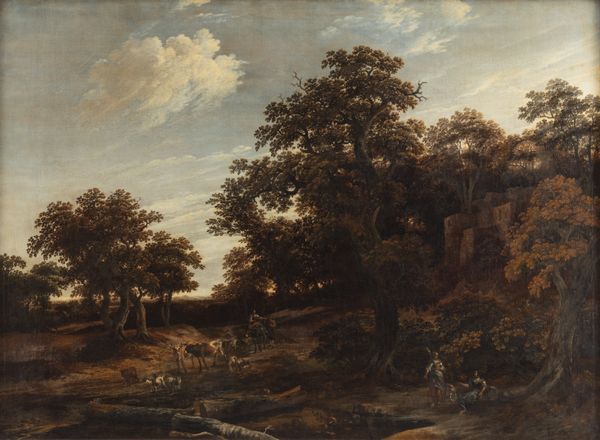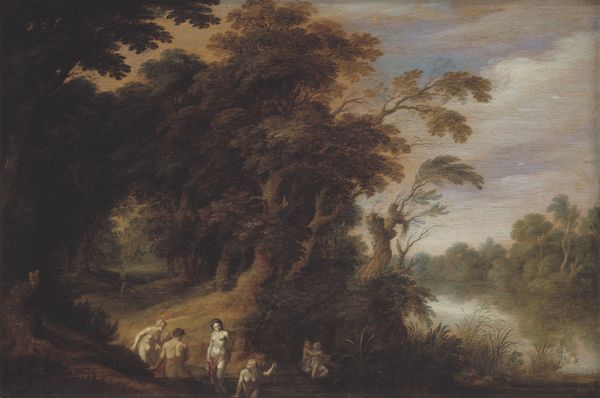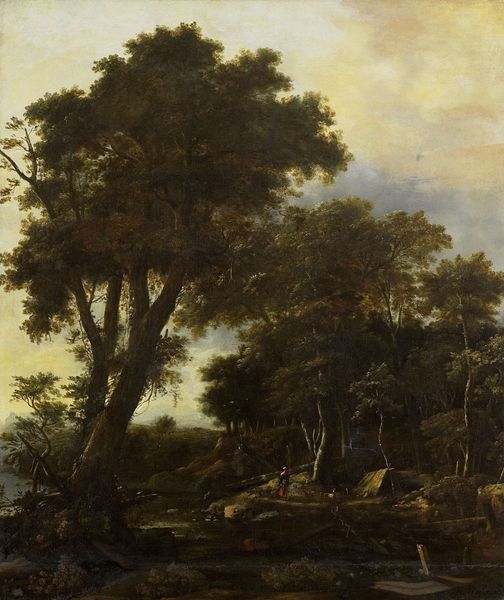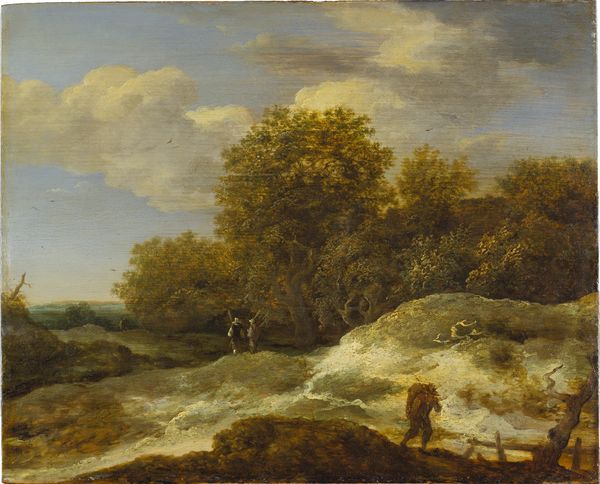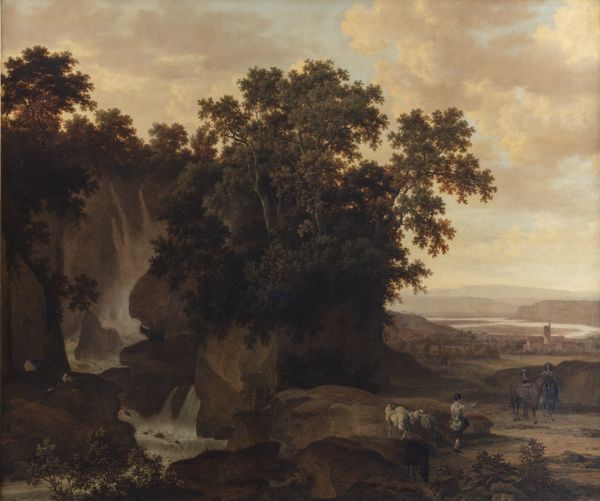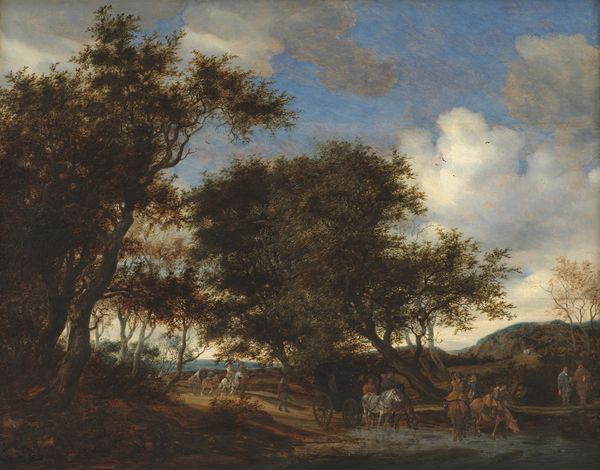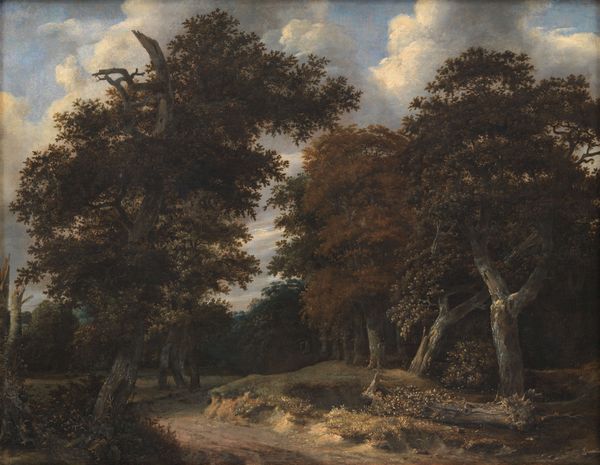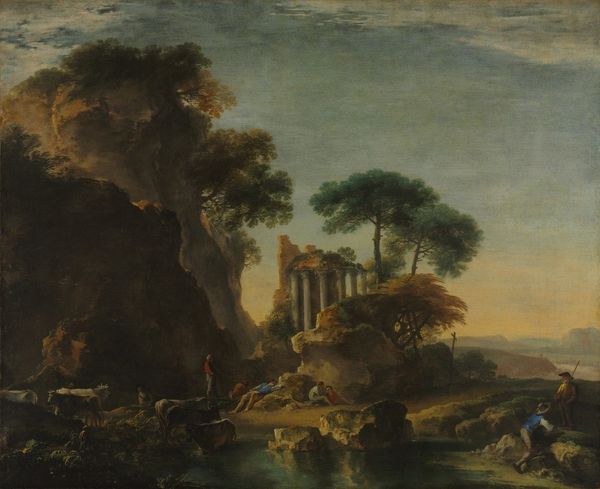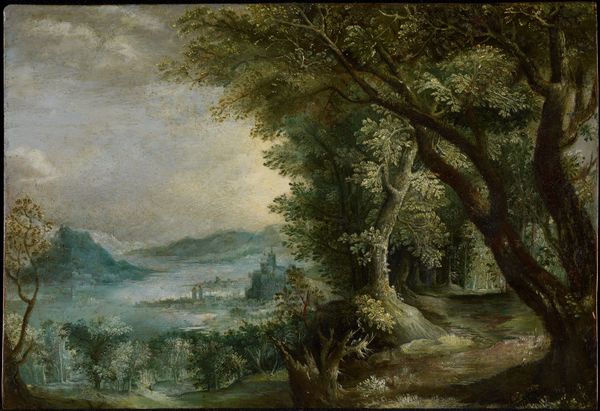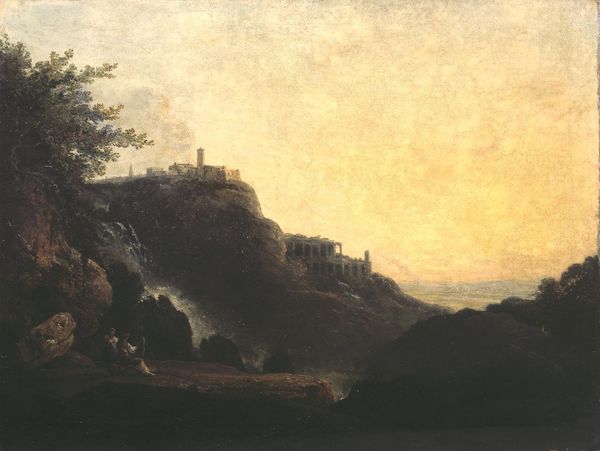
#
abandoned
#
charcoal drawing
#
possibly oil pastel
#
oil painting
#
derelict
#
underpainting
#
painting painterly
#
mixed medium
#
watercolor
#
environment sketch
Dimensions: height 46 cm, width 66 cm, depth 6.5 cm
Copyright: Rijks Museum: Open Domain
Curator: Charles de Hooch's "Landscape with Journey to Emmaus," dating back to 1627, presents an intriguing study in contrasts. What strikes you first? Editor: Its somber mood. There's a definite air of decay and abandonment in the crumbling architecture. And a distinct feeling of resignation emanating from the scene, like hope abandoned a long time ago. Curator: The dilapidated buildings certainly provide a focal point. I'm fascinated by the underpainting, the artist using it as structural integrity but leaving space for what appear to be watercolor rendering. Look at how the foliage is realized in painterly swoops and blotches. Note, too, the interplay between the light on the horizon and the shadows dominating the foreground; the composition itself reinforces the themes. Editor: And how de Hooch places these tiny biblical figures in that landscape—the power dynamics in art back then, I think, shifted to nature, while also suggesting ideas about religion at the time. It appears faith, or perhaps religious structures themselves, were eroding. Do you think this painting represents socio-political angst with religious undertones? Curator: The symbolic decay can suggest an observation about the status of the Church and society’s structures. And you notice, of course, that this tale – of encountering Christ post-resurrection – normally signifies hope, not dereliction. It almost works like a subtle rebellion to established artistic styles. I note the contrast in the painting’s historical setting. De Hooch made this not in antiquity, but amidst the political strife of the early Dutch Republic. The landscape itself can be a potent symbol of national identity and struggles for freedom from the Spanish Empire, right? Editor: Right, I was just getting there! Curator: These nuances help explain de Hooch's unique vision, right? The materials, the composition—everything serves a higher narrative. Editor: Indeed, seeing how the painter renders this, really shows a historical record for questioning faith, authority and rebuilding in ways more relevant to those in charge at the time, or looking ahead. It’s more than just a painting. It's an experience of the artist questioning and trying to figure things out too, which echoes still now, hundreds of years later. Curator: Exactly. What begins with decaying architecture ends with lingering relevance to where we can discover more from art, or the art world’s political stance on topics, and the freedom to reflect.
Comments
No comments
Be the first to comment and join the conversation on the ultimate creative platform.
